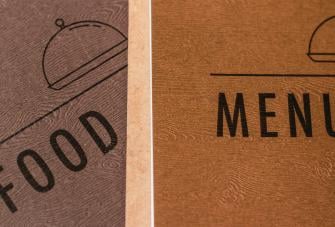Restaurant vs Food Truck - Which is Best in 2021?
Food truck-specific data is quite sparse since the industry is developing so rapidly. Therefore, people often link the value of food trucks with that of the overall restaurant industry, which is an astronomical US$1.6 trillion worldwide (AU$2.1 trillion) [1].
So, restaurant vs food truck - which is the best business to open in 2021? Which model is more profitable? Which do customers prefer?
We answer these questions and more below.
Food trucks
Looking at start-up and operating costs, food trucks take an obvious lead. They offer a unique appeal, but how do these factors compare against traditional restaurants?
Startup costs
Used food trucks can be purchased in Australia for at least $15,000. Purpose-built, new trucks can cost $100,000, or more [2].
Since food trucks are typically a more minor operation than conventional sit-in restaurants, startup costs are much lower.
Wiring and plumbing a truck will cost significantly less than fitting a commercial kitchen in a brick and mortar building. On that note, electricity bills are much lower, too. Understandably, food trucks can cook less food at one time, therefore the kitchen equipment doesn’t have to be excessively large or require the same amount of power as restaurant machinery.
Other factors to consider when calculating startup costs include insurance, power generations, and additional storage facilities. Check out our blog, How to Start a Food Truck Business to learn more.
Staffing costs
Since food trucks offer more limited space, it’s expected that there’ll be fewer staff. There is no need for a host, waiter, or other staff to clean and prepare tables. A cashier and a handful of chefs should be enough to operate a food truck. Fewer staff means lower labour costs and higher profits.
Staff will be expected to be more versatile in their role, however - perhaps multitasking between taking payments and preparing food. Having a reliable ordering system in place will alleviate some pressure from staff and keep things running smoothly, even if the truck is understaffed or having a rush of customers.
Recurring costs
Food trucks require a lot of single-use containers, disposable cutlery, and napkins. They usually buy gas and oil in smaller quantities due to a lack of storage, which is a lot more expensive than buying in bulk. This extends to almost all products: finding a provider who will match a large wholesaler’s price for a small order of items may be challenging and will incur extra costs. However, with nowhere to keep excess products, there may be no choice for some truck owners, unless they invest in extra storage facilities.
Another expense for truck owners is ground rent. Unless you own the property you trade from, you may require a permit to park there, as well as some other licenses.
Customer journey
Street food has incredibly unique appeal. The consumer journey is interesting, and may appeal to people who want to try something new: patrons wait in line, order and pay, wait, then take their food to wherever they choose to eat it. The experience is less focused on the aesthetic of the restaurant and interaction with staff, and focuses solely on the food. Another interesting quirk is that customers can usually watch their food being made - similar to an open kitchen in a restaurant. This can add intrigue for customers as they wait with anticipation.
Perhaps the ultimate advantage of a truck is the flexibility of location. Trucks can move between rural and city areas to meet ideal customers where they are. If your ideal customer is taking a day at the beach or heading into the center of the city to do some shopping, you’ll be able to take your truck there and set up shop. If you park in a city, you’ll be able to greet the masses as they arrive to work or step out for some lunch.
Order size and revenue per customer
Most people have eaten at restaurants, but not everyone has eaten at a food truck. Most people may feel more comfortable eating at restaurants, so food truck operators may have to overcome that initial bias to be successful.
It’s less likely that patrons will bring their entire families out for a three-course meal at a food truck. Trucks, therefore, require more customers, or more expensive dishes, in order to beat the revenue of restaurants.
Food truck owners may choose to test out different menus or cooking styles. Since customers often won’t expect the same consistency as they'd expect from a restaurant, chefs can be slightly more adventurous and creative with their dishes.
Seasonal trends
Of course, the weather contributes massively to food truck sales. Former food truck owner turned restaurant owner Malcom Badell shared his views on how the temperatures and seasons impact sales for both structures:
When it comes to sunny days, food trucks are an obvious winner. People like to eat lighter, colder foods when it’s hot, plus they can eat outside and have a picnic with the food truck takeout.
In the colder months, sales drop dramatically. People don’t want to wait in the rain for their meals. Badell states that on rainy, windy days, he often closed the truck [3].
Food trucks have the opportunity to attend events - such as festivals and outdoor events. This model can also be converted into a food cart, to cater for weddings and birthday parties.
Restaurants
Startup costs
In Oceania, the price of opening a restaurant varies greatly depending on whether or not you buy a purpose-built cafe/restaurant and the location where you choose to open. Roughly, it can cost anywhere between AU$200,000 to $4,500,000 (NZ$215,000 to $4,832,000) [4].
Rent is often higher for buildings, as is the price of equipment.
Other startup expenses include:
- Utilities
- Marketing
- Software
- Furniture
- Licensing
- Administrative Affairs
Staffing costs
It’s true that staffing costs are higher in a brick and mortar restaurant. However, this doesn’t have to be entirely negative, since having more staff suggests that restaurants can serve and collect orders from multiple customers at the same time. A larger team, operating in a larger kitchen may work together to fulfill more order requests in less time.
Higher customer turnover should guarantee higher profits.
Recurring costs
While restaurants don’t use as many disposable dishes as trucks, they pay more for higher-quality ceramic crockery and metal cutlery. Buying plates, bowls, and glassware is a huge expense when opening a restaurant, and is a recurring bill since crockery can easily get broken and chip over time.
Some other recurring bills include maintenance and repairs, marketing, electricity, and customer ventilation and heating.
Customer journey
There is a set customer journey and narrative within a conventional restaurant: we are welcomed and seated by a host, order at our own pace, then are served our meals. Many restaurants operate using table service, where customers simply place an order and the server brings it to the table. It’s convenient, familiar, and suitable for families and people of all ages.
Staffing costs can be reduced in this regard, as many chains such as Nandos and Five Guys allow patrons to refill their own drinks and gather their cutlery themselves. This allows for a more interactive experience for customers, and less staff needed for the company.
Restaurants have better control of the atmosphere than food trucks. The decor, music and intimate customer service interactions have the ability to turn an ordinary meal into a memorable dining experience.
Order size and revenue per customer
Since customers usually sit for a while in restaurants, they may decide to order more than they originally planned. Upselling is a technique that restaurants use to persuade customers to order a second course or an extra side. This probably happens regularly in restaurants, for example when a customer has just finished their main course and is adamant that they’re full, then they spot the waiter walking by with a delicious-looking dessert, and decide that they want a slice too.
Since many restaurants offer takeout, they are able to appeal to a wide customer base. When table limits have been reached, restaurants are able to continue serving if they allow customers to dine off of the premises. This gives them an added advantage - since many takeout trucks don’t offer both indoor and outdoor seating.
Seasonal trends
According to Malcom Badell, on rainy, cold days, restaurants take the lead. Malcolm reported that his restaurant sales were actually higher on rainy days than on normal days. He suggested the desire for comfort and company as the reason.
It’s likely that people will opt for a restaurant for more traditional occasions too. Both trucks and restaurants can adjust their menu and add seasonal dishes when necessary. Yet, it’s likely that restaurants will be ahead of the curve for religious and special holidays.
Management
Effective management is the key to any successful food business, whether it be a food truck or a restaurant. Using a point of sale (POS) system will add much greater insights to the profitability of the company, as detailed reports of where exactly profit is being generated, and where liabilities lay are provided. To get the best value, we recommend choosing a POS system that is tailored to the specific needs of your business.
We have created two systems: the Epos Now Restaurant POS system for traditional restaurants, and the Takeaway System for food trucks.
Investing in a reliable POS system can transform your business. Some features and benefits include:
- The ability to easily connect to major ordering and delivery apps
- Real-time inventory tracking which calculates costs and profit per unit
- A simplified reordering process
- Integration with leading accounting software - Xero, Quickbooks, Sage
- Reduce wastage and labour costs with reports on footfall, sales, and inventory projections
You may also want to read…
Food Truck Marketing Ideas for 2021




